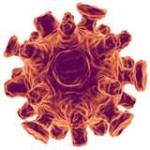Cytomegalovirus in post transplant patients
Introduction

The cytomegalovirus (CMV) is a double stranded DNA virus part of the Herpesviridae viral family also known as herpesviruses. Herpesviruses share common characteristics including the ability to remain metabolically inert within the human body for extended periods of time. The human cytomegalovirus (HCMV) also known as Human herpesvirus 5 (HHV-5) is a species that causes infections typically associated with the salivary gland. HCMV is a common virus where about 50%-80% of the general adult population is infected (Slonczewski, 2013). However, most people who are infected are unaware since the virus is typically dormant in healthy individuals. The high prevalence of the virus among the general population is due to the many avenues of viral transmission. It is easily transmitted by person-to-person contact by saliva, urine, semen, blood, and cervical secretions during birth. Those with compromised immune systems manifest symptoms similar to mononucleosis (Epstein-Barr virus), and are affected in just about every organ in the body. Immunocompromised individuals such as organ transplant recipients and AIDS patients are especially at risk for more severe primary infections including latent infection, asymptomatic viral shedding (when the virus is active but doesn’t show visible signs or symptoms), and life-threatening multisystem disease (Farrugia, 1992). In such patients, HCMV not only causes problems in the acute phase but also increases the risk of long-term complications (Soderberg-Naucler, 2008).
HCMV role in cancer
Include some current research, with at least one figure showing data.
Section 2
Include some current research, with at least one figure showing data.
Section 3
Include some current research, with at least one figure showing data.
References
[1] Hodgkin, J. and Partridge, F.A. "Caenorhabditis elegans meets microsporidia: the nematode killers from Paris." 2008. PLoS Biology 6:2634-2637.
Authored for BIOL 238 Microbiology, taught by Joan Slonczewski, 2015, Kenyon College.
